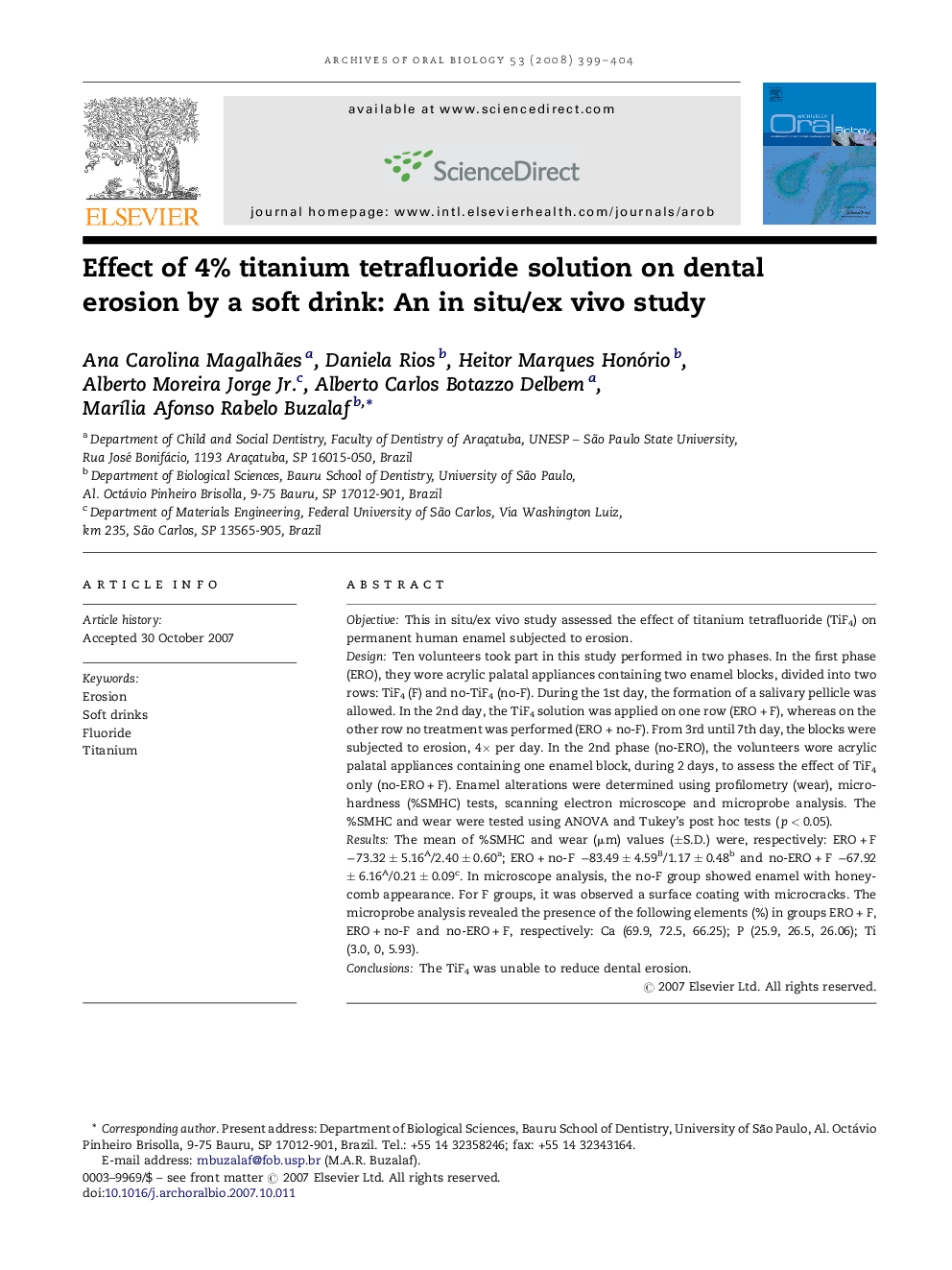| Article ID | Journal | Published Year | Pages | File Type |
|---|---|---|---|---|
| 3121805 | Archives of Oral Biology | 2008 | 6 Pages |
ObjectiveThis in situ/ex vivo study assessed the effect of titanium tetrafluoride (TiF4) on permanent human enamel subjected to erosion.DesignTen volunteers took part in this study performed in two phases. In the first phase (ERO), they wore acrylic palatal appliances containing two enamel blocks, divided into two rows: TiF4 (F) and no-TiF4 (no-F). During the 1st day, the formation of a salivary pellicle was allowed. In the 2nd day, the TiF4 solution was applied on one row (ERO + F), whereas on the other row no treatment was performed (ERO + no-F). From 3rd until 7th day, the blocks were subjected to erosion, 4× per day. In the 2nd phase (no-ERO), the volunteers wore acrylic palatal appliances containing one enamel block, during 2 days, to assess the effect of TiF4 only (no-ERO + F). Enamel alterations were determined using profilometry (wear), microhardness (%SMHC) tests, scanning electron microscope and microprobe analysis. The %SMHC and wear were tested using ANOVA and Tukey's post hoc tests (p < 0.05).ResultsThe mean of %SMHC and wear (μm) values (±S.D.) were, respectively: ERO + F −73.32 ± 5.16A/2.40 ± 0.60a; ERO + no-F −83.49 ± 4.59B/1.17 ± 0.48b and no-ERO + F −67.92 ± 6.16A/0.21 ± 0.09c. In microscope analysis, the no-F group showed enamel with honeycomb appearance. For F groups, it was observed a surface coating with microcracks. The microprobe analysis revealed the presence of the following elements (%) in groups ERO + F, ERO + no-F and no-ERO + F, respectively: Ca (69.9, 72.5, 66.25); P (25.9, 26.5, 26.06); Ti (3.0, 0, 5.93).ConclusionsThe TiF4 was unable to reduce dental erosion.
